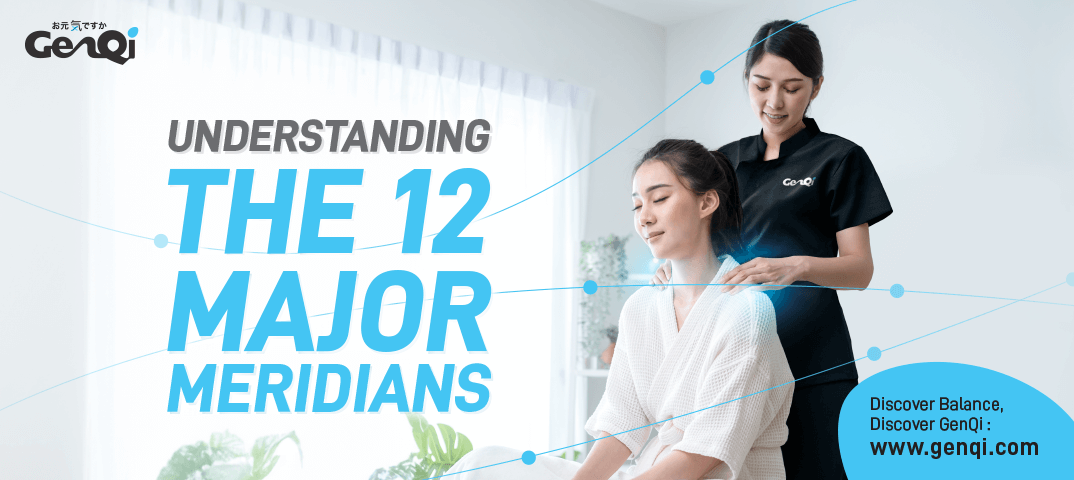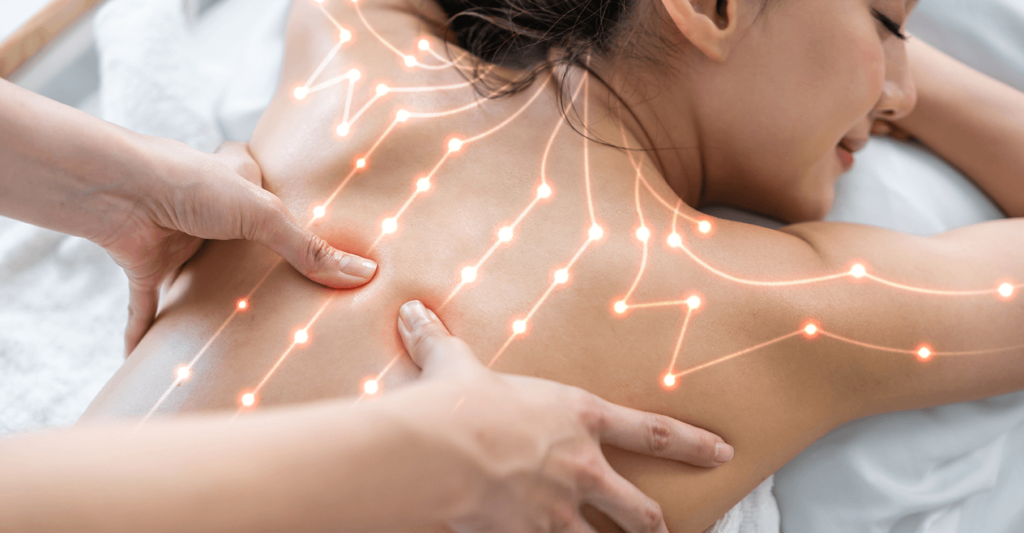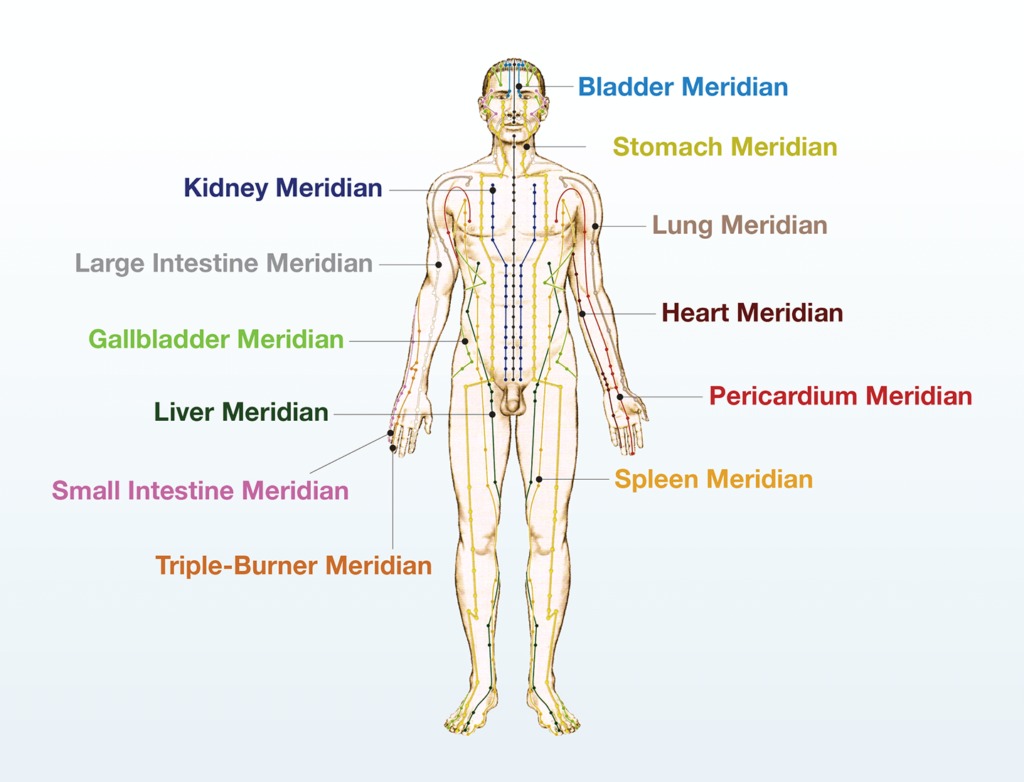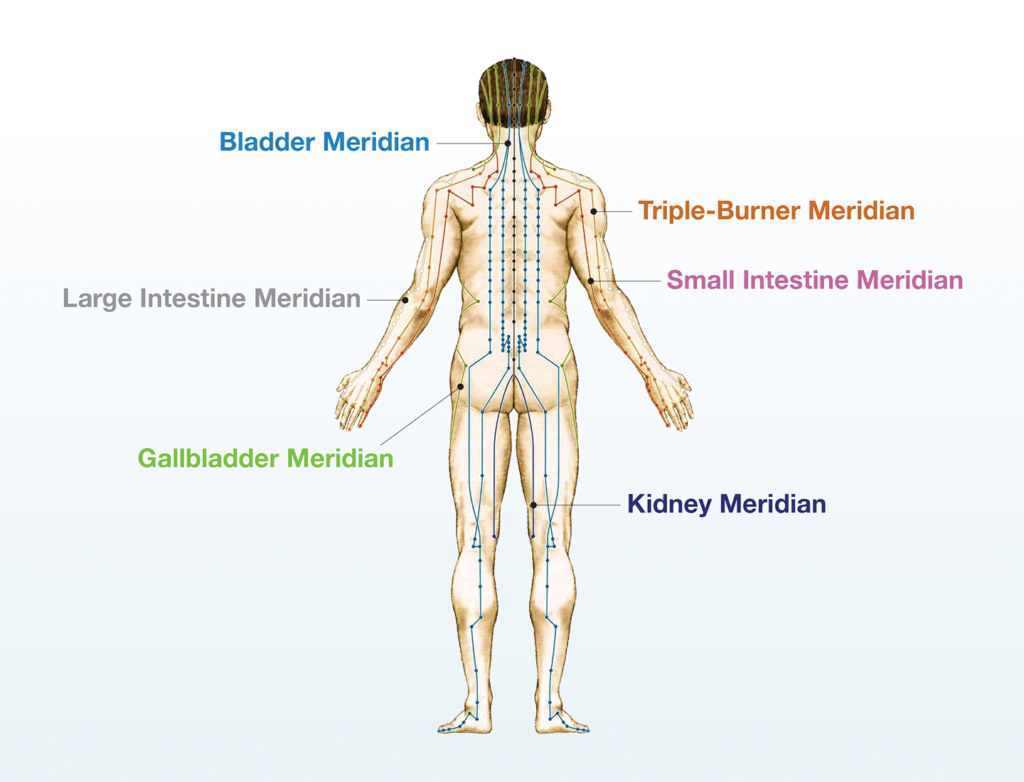
Understanding The 12 Major Meridians
A meridian massage is a traditional practice rooted in Traditional Chinese Medicine (TCM). This massage technique involves the stimulation of acupressure points using various methods to alleviate blockages and restore balance to the flow of Qi (energy) and blood within the meridians. Meridians are often compared to rivers, serving as conduits for the flow of energy (Qi) much like a river carries water to specific destinations in a defined direction. These meridian pathways function by distributing energy, nutrients, and blood throughout the body, similar to the role of the circulatory system. There are 12 major meridians in the body, and each of these meridian lines is interconnected with major organs.



The 12 Major Meridians
Heart Meridian
The heart is often referred to as the “King of the Organs” and is considered the residence of the vital essence. It holds a commanding role over other organs and emotions, serving as the seat of the mind. Collaborating with various organs, the heart plays a crucial role in regulating circulation and fostering a healthy mental state. When the heart is in a state of imbalance, it is believed that all other organs and meridians in the body will be affected. Additionally, the heart is viewed as a primary component in the body’s defence against disease.
Lung Meridian
The lung meridian holds the second position among the 12 Principal Meridians, following the heart meridian. Its primary functions include assisting in the control of energy and circulation of blood. The lungs and the heart are considered interrelated, working together in harmony as complementary components of the overall living system, contributing to the regulation of both blood and energy. Additionally, the lungs are associated with the control of the skin and perspiration.
Stomach Meridian
The stomach is considered to be responsible for elemental balance and serves as the initial stage of the digestive process. Referred to as the “Root of Postnatal Life” due to its connection with the umbilical cord, the stomach plays a crucial role in extracting energy from consumed food and beverages. Collaborating with the spleen, it facilitates the transportation of energy throughout the Meridian System. Additionally, the stomach is involved in utilising various types of food to balance the five elemental energies.
Kidney Meridian
The kidney is considered one of the most crucial organs and encompasses both the adrenal and sex glands in both men and women. Referred to as the “Root of Life,” the kidney is responsible for storing prenatal energy and essential vital energy required for life. Beyond its role in energy storage, the kidney is involved in regulating the brain and plays a significant part in memory formation and rationality.
Large Intestine Meridian
The large intestine is responsible for the transformation of liquid waste into solid waste, serving as the final organ involved before the elimination of solid waste from the body. It maintains a close connection with its paired organ, the lungs. The movement of the large intestine is influenced by the action of the lungs during breathing. Moreover, the large intestine plays a role in balancing the body’s fluids and collaborates with the lungs in the process of perspiration.
Small Intestine Meridian
The small intestine is responsible for receiving food during the digestion process, separating impurities from the food before passing the waste on, and absorbing water. It collaborates with the heart meridian, influencing and being influenced by basic emotions. In Traditional Chinese Medicine, the equivalent of “a broken heart” is referred to as “broken intestines.” Additionally, this meridian works with the pituitary gland, also known as the “master gland,” to regulate growth and the endocrine system.
Liver Meridian
The liver is considered one of the primary organs in TCM. It transforms nutrients into usable substances that the body employs for energy and plays a vital role in detoxifying the blood. The liver meridian is responsible for the peripheral nervous system, as well as the ligaments and tendons.
Bladder Meridian
The bladder primarily stores and eliminates liquid waste, but its energetic function involves balancing the autonomous nervous system. The bladder meridian spans the height of the body and runs alongside the spinal column. It plays a role in regulating the sympathetic and parasympathetic responses.
Gallbladder Meridian
The gallbladder meridian can be likened to the body’s janitor. The gallbladder secretes bile to aid in digestion for muscular energy and collaborates with the lymphatic system to clear out lactic acid. Consequently, the gallbladder meridian plays a role in maintaining muscular health. It is also associated with daring and decisive mental states, a belief reflected in the aphorism “a lot of gall,” even in ancient Western cultures.
Spleen Meridian
This meridian includes the pancreas and is, in part, responsible for digestion. Enzymes produced in the spleen and pancreas extract nutrients from food and beverages. The meridian regulates the quantity and quality of blood in circulation. The spleen meridian collaborates with the lung meridian to generate True Human Energy. Additionally, this meridian is influenced by the tone of muscles and, in turn, affects them. It is responsible for logical and analytical thinking and serves as the first meridian in memory formation.
Pericardium Meridian
The pericardium, while not an organ itself, corresponds to an actual part of the body. It is a protective sac that encircles the heart and also aids the triple-heart warmer in its functions. Unlike most principal meridians, the pericardium is not directly associated with a major organ. Its protective function extends beyond the physical to include the mental, emotional, and spiritual aspects. Additionally, the pericardium is responsible for regulating the circulation of blood. It also establishes a connection between emotional feelings of love and the physical act of sex.
Triple-Burner Meridian
The Triple-Burner Meridian is the second primary meridian not associated with an organ, similar to the thyroid, as it controls metabolism. However, its scope is not strictly limited to energetic metabolism but extends to digestion and waste processing as well. The triple burner is divided into three parts: the upper, middle, and lower. The upper burner runs from the base of the tongue to the stomach, controlling the intake of food, water, and oxygen. The middle burner extends from the stomach to the pyloric valve, overseeing digestion and the transformation of substances for use by the body. The lower burner splits, terminating at the anus and urinary tract, and is responsible for the elimination of wastes.
Ultimately, the internal meridians manifest on the skin’s surface, becoming external. Acupoints, situated along the external pathways, play a crucial role. If there is an issue with a specific channel or organ, addressing these problems can be achieved by treating various acupoints.
Stimulating these pressure points initiates a cascade of effects along the meridian network. This activation is instrumental in carrying the massage’s effects from one end of the body to another, facilitating the desired healing impact. Undergoing a 12-major meridian massage can be beneficial in rebalancing the body’s systems and enhancing overall health.
